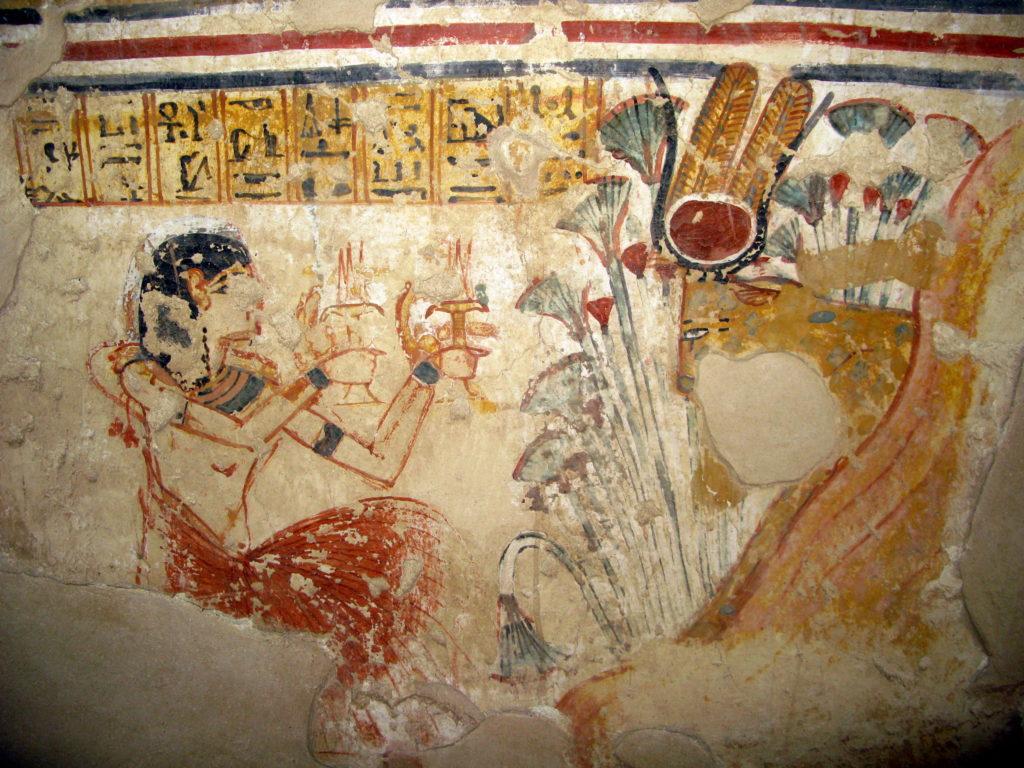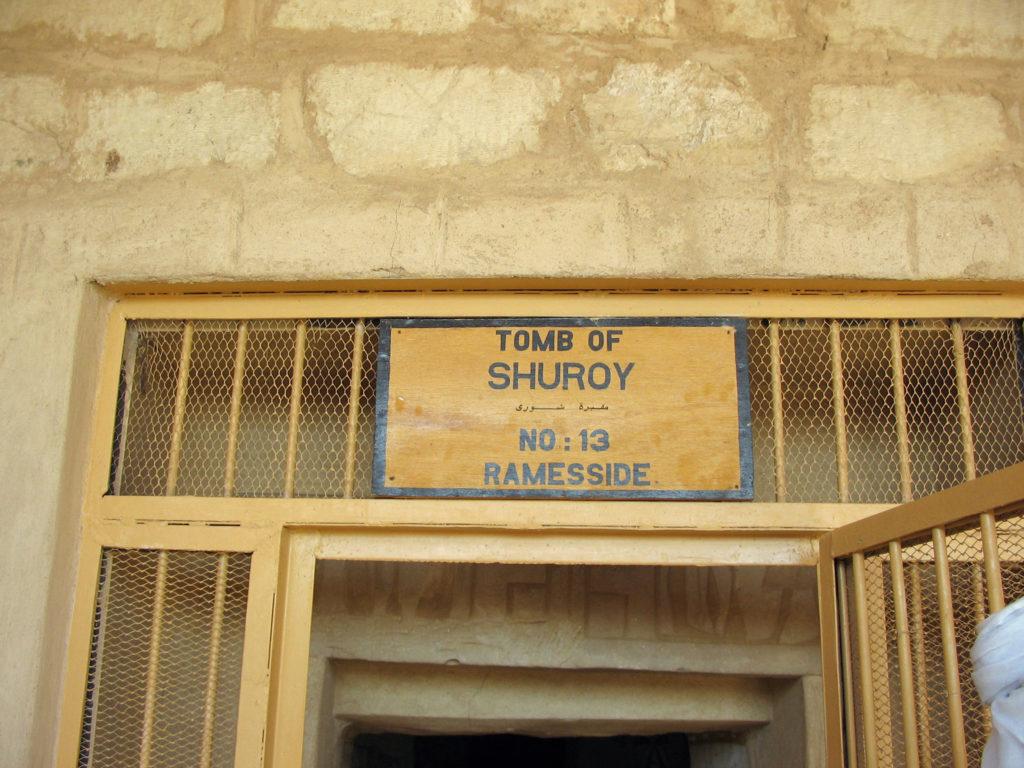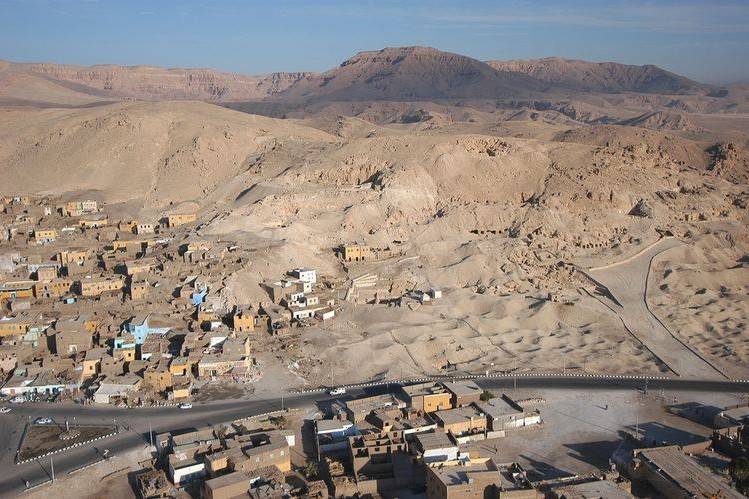Tomb of Shuroy
TT13
Luxor’s West Bank is full of ancient treasures. Many people visit the Valley of the Kings and impressive mortuary temples, but a less crowded spot called Dra Abu el-Naga has a special tomb: the Tomb of Shuroy (TT13). This tomb is small but rich in meaning. It belongs to a temple official who played an important role as the chief incense bearer of Amun.
If you want to explore beyond the main attractions, TT13 is a great choice. It features bright wall paintings, religious symbols, and a personal touch that makes it unique among Luxor’s noble tombs.

Who Was Shuroy? The Chief Incense Bearer of Amun
Shuroy lived during the Ramesside Period (20th Dynasty), a time when Egypt’s empire was vast and its religious rituals highly formalized. His title, “Head of Brazier-Bearers of Amun”, placed him in charge of incense offerings at the great temple of Amun-Ra in Karnak.
Incense in ancient Egypt was not a luxury—it was a necessity. It purified sacred spaces, warded off evil, and carried prayers upward in fragrant smoke. As chief incense bearer, Shuroy ensured that the god Amun was honored daily with this vital ritual. His tomb reflects both his professional identity and his hope for eternal remembrance.
Luxor Tours & Activities
Looking to save some costs on your travel? Why not join a shared group tour to explore Luxor, Egypt? Here are some activities you might be interested in:
Location and Layout of the Tomb
The Tomb of Shuroy (TT13) lies in Dra Abu el-Naga, one of the oldest sections of the Theban Necropolis. This hillside cemetery is dotted with the tombs of priests, scribes, and officials who served Egypt’s temples and palaces.
Shuroy’s tomb is located just south of the Tomb of Roy (TT255), making it easy to visit both in one stop. Architecturally, TT13 follows the classic T-shaped plan common to Theban tombs:
- A vestibule serves as the entry chamber.
- A hall where the most important wall scenes are preserved.
Although incomplete and damaged over time, the tomb underwent a restoration in 2002, which stabilized its structure and revived its surviving paintings. Today, visitors can step inside and still sense the artistry and devotion that shaped this space over 3,000 years ago.

Artistic Highlights and Wall Scenes
The walls of TT13 may not dazzle with the grandeur of royal tombs, but they are deeply human and emotionally powerful.
- Funerary Procession: One of the most striking scenes shows Shuroy’s mummy carried by male bearers, while mourners wail at his feet. The raw emotion captured here is rare in Egyptian art.
- Banquet and Offerings: Another wall depicts Shuroy and his family receiving offerings, surrounded by priests and attendants. These scenes ensured that food, drink, and incense would sustain him eternally.
- Opening of the Mouth Ritual: A priest performs this vital ceremony on Shuroy’s mummy, symbolically restoring his senses for the afterlife.
- Osiris and the Four Sons of Horus: Shuroy is shown before Osiris, the god of the dead, while protective deities stand nearby.
- Color Palette: The paintings were executed in fresco on a bluish-white coating, with ochres and harmonized tones typical of Ramesside art. Even in their faded state, the colors retain warmth and vitality.
These scenes are not just decoration—they are a visual prayer, a guarantee that Shuroy’s service to Amun would continue forever.

Symbolism and Religious Significance
Every detail in TT13 carries symbolic meaning. The repeated incense scenes reflect Shuroy’s professional role, but they also highlight incense’s broader role in Egyptian spirituality:
- Purification: Incense cleanses ritual spaces of impurity.
- Protection: Smoke was believed to ward off malevolent forces.
- Communication: Rising smoke carried prayers to the gods.
By filling his tomb with such imagery, Shuroy ensured that these rituals would continue eternally, securing his place in the afterlife. The tomb also reflects the Ramesside funerary tradition, where even non-royal officials sought to immortalize themselves through richly decorated chapels.

Visiting the Tomb of Shuroy Today
For modern travelers, the Tomb of Shuroy is a rewarding stop on the West Bank of Luxor. While it lacks the scale of the Valley of the Kings, it offers something equally valuable: intimacy. Standing in its small chambers, you can almost feel the presence of Shuroy and his family, their hopes for eternity painted on the walls.
The tomb is part of the ticketed group of Dra Abu el-Naga tombs, often visited alongside:
- Tomb of Roy (TT255) – famous for its banquet scenes.
- Tomb of Ramose (TT55) – known for exquisite Amarna-style art.
- Tomb of Rekhmire (TT100) – one of the largest and most detailed noble tombs.
Together, these sites provide a well-rounded picture of Theban society, from high officials to temple servants.
Did you know that
By purchasing through our links, you support us at no additional cost.
Thank you for your support. ♥️






